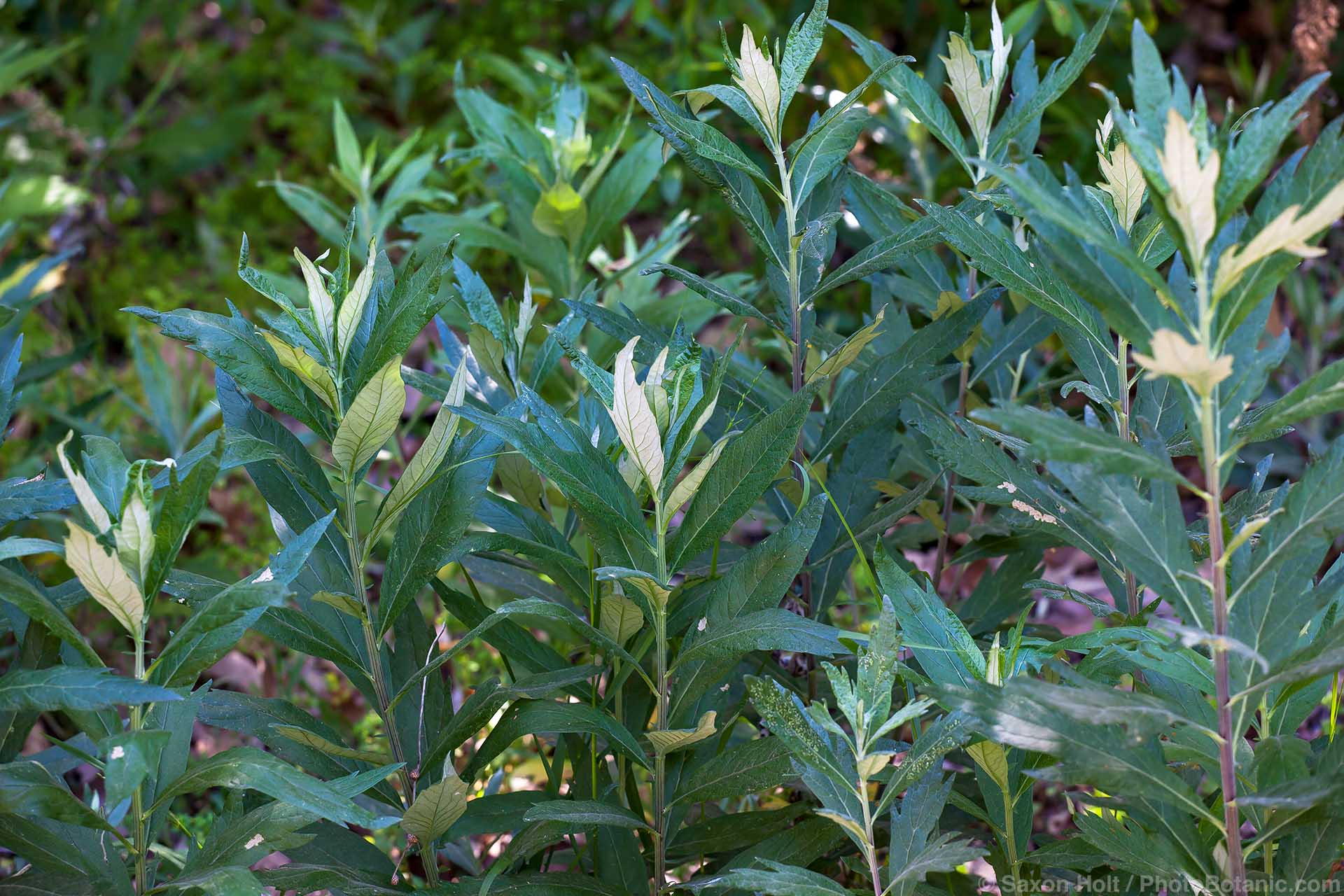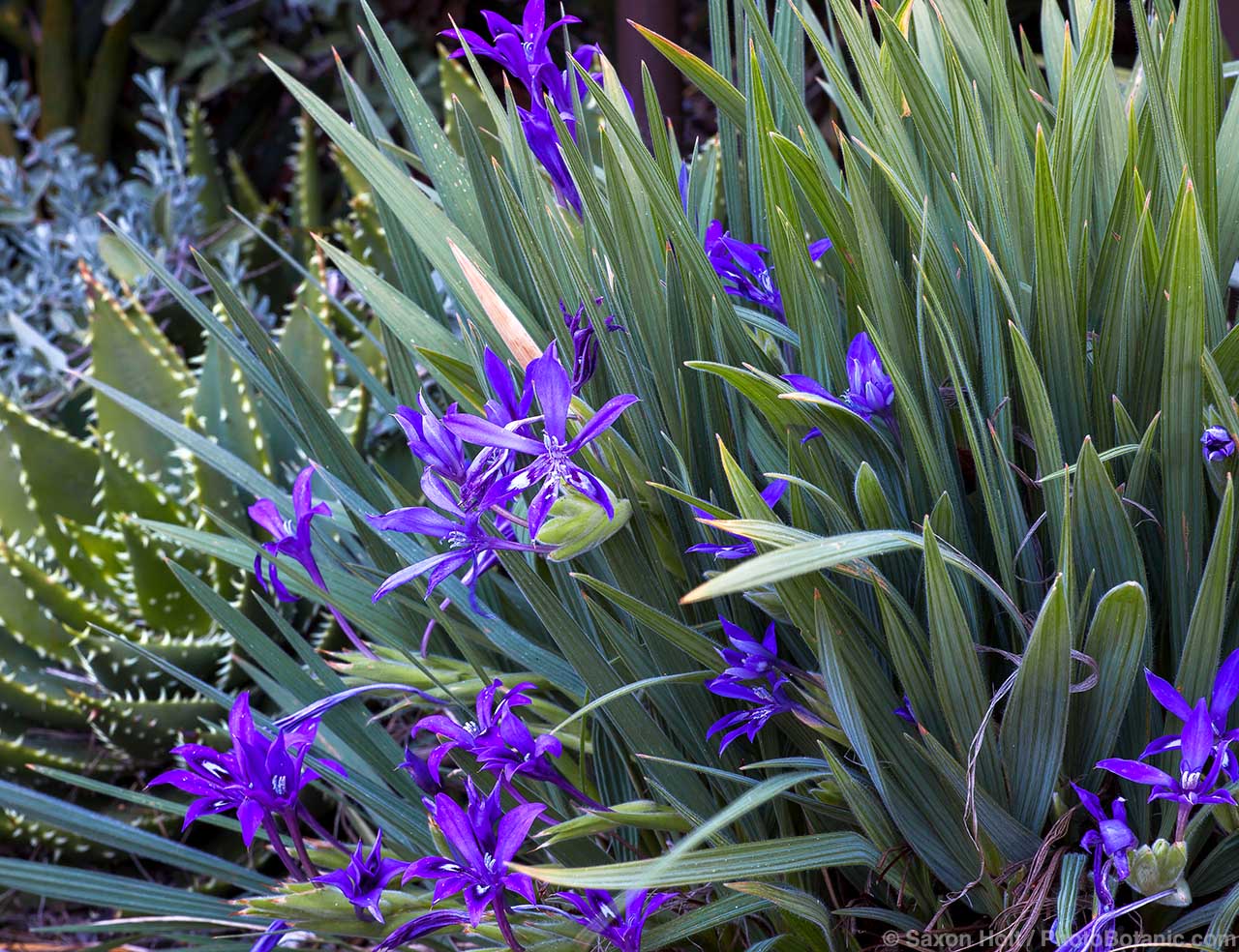Pineapple Guava
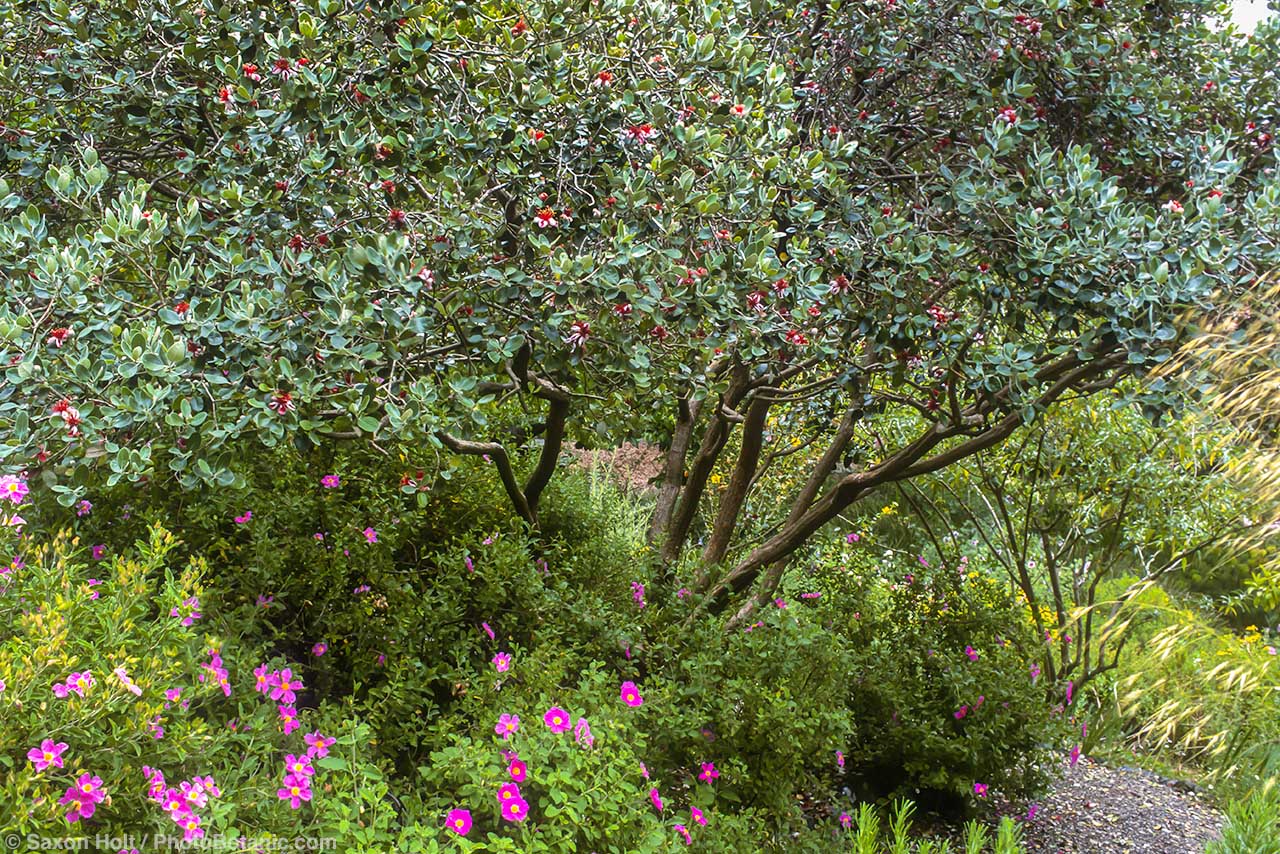
Share This!
Pineapple guava may hold the record for the longest lasting resistance to a plant name change, a resistance recently rewarded with a reinstatement of the original name of Feijoa sellowiana. This evergreen, subtropical South American shrub or small tree was given that name in 1859, renamed Acca sellowiana in 1941, and returned to its original name in 2019. Many gardeners and horticulturists –along with much of the nursery industry– never made the switch.
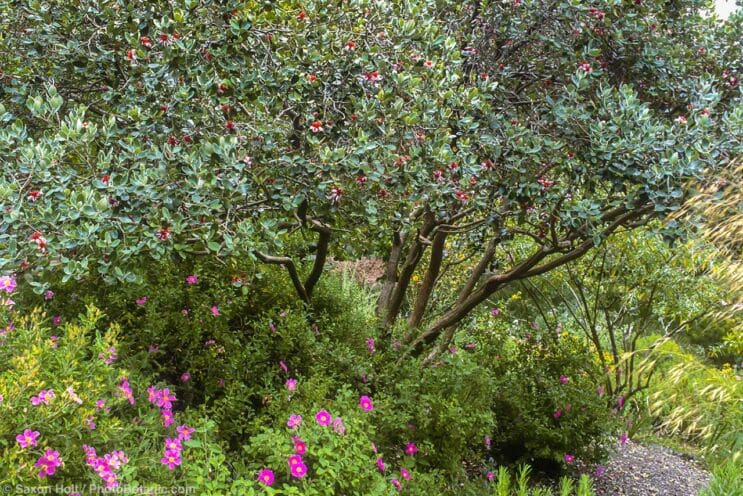
Pineapple guava (Feijoa sellowiana) pruned as a small multitrunk tree
Feijoa sellowiana has thick, leathery, elliptical leaves, glossy dark green on the upper surface and felted and silvery gray-white beneath. Growth habit is rounded and open with a wide-spreading crown. Spring flowers have four white, wide-spreading or reflexed petals that are purplish inside and prominent, bright red stamens topped with yellow pollen. Oval to rounded fruit is 1-3 inches long, lightly to highly aromatic, and green even when mature.
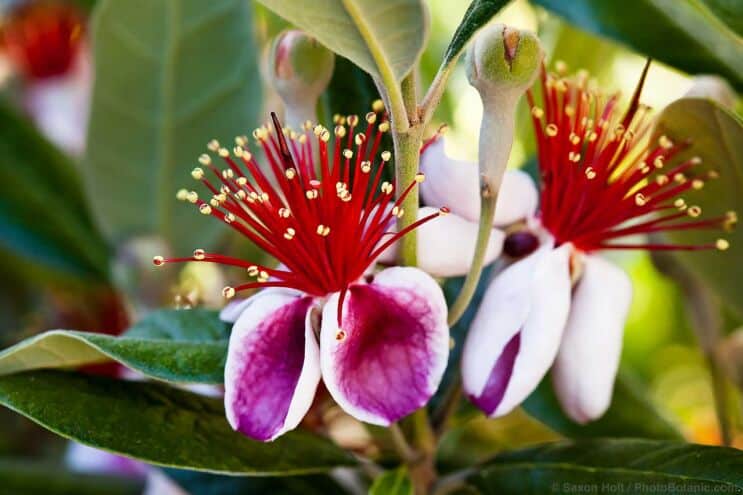
The thick petals of pineapple guava flowers are edible too.
Native to warm-temperate or cool-subtropical regions of southeastern Brazil, eastern Paraguay, and Uruguay, this variable plant is also found in northeastern Argentina, although there is some discussion about whether it is native there.
Two main forms are recognized, one with somewhat bitter fruit from the highlands of Brazil and the other, said to be much sweeter, from extreme southeastern Brazil and Uruguay. The latter apparently is the one grown both in home gardens and commercially in far-flung parts of the world.
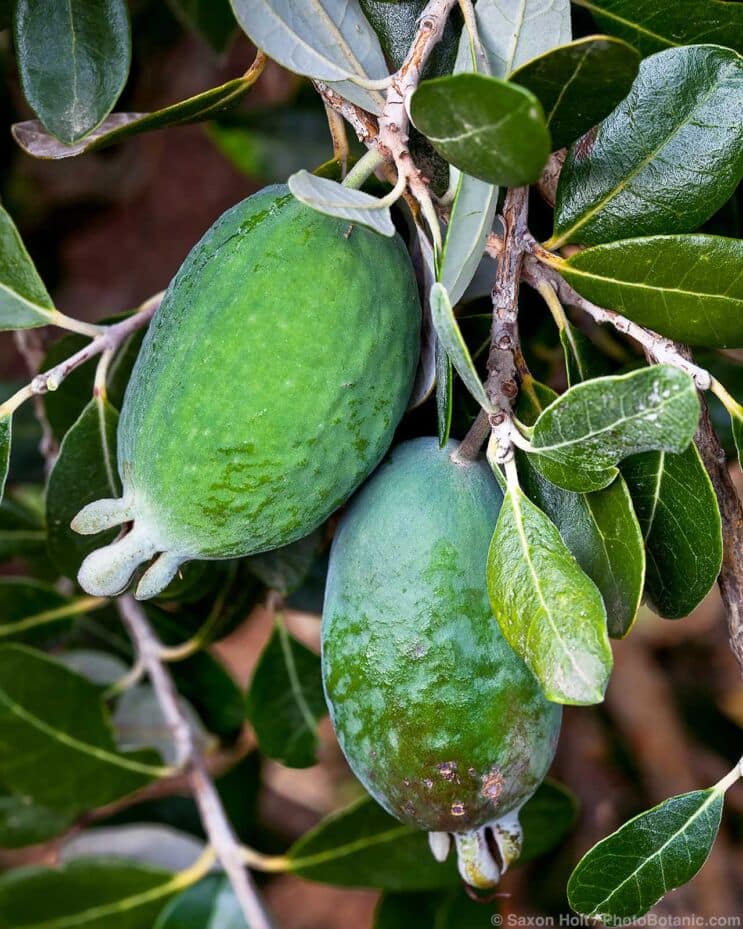
Green fruit of pineapple guava is ripe only right before it falls to the ground.
Commercial fruit production, at least for export, has been stalled to some extent by the fragility and short shelf-life of the fruit, but it is consumed locally wherever it is grown. The fruit remains green into maturity and optimum flavor develops right at the time the fruit is ready to fall. The tender fruit is easily damaged by its fall, so it must be hand-harvested or collected in above-ground nets. Damage from falls is mostly aesthetic, but it does affect marketability and hastens the transition to overripe.
Grown as an ornamental, Feijoa sellowiana blends easily into the summer-dry landscape. Where fruit production is not the goal, pineapple guava needs little summer water. Plants are grown successfully in a wide range of soils, including heavy clay. They need only reasonable drainage and a sunny but not too hot location. Where summers are hot a little afternoon shade is appreciated. Frosty nights are not a problem; in fact some winter chilling is required for best production of flowers and fruit.
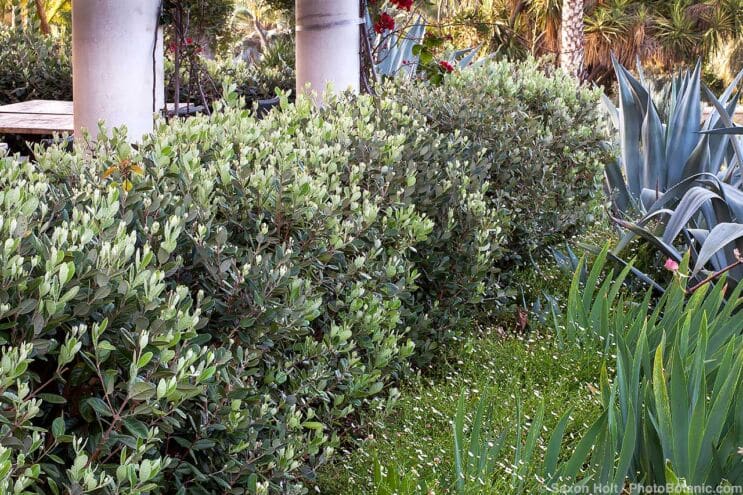
Feijoa sellowiana hedge at Huntington Botanical Gardens
Feijoa sellowiana responds well to pruning for shape and form, although gardeners should be aware that flowers are produced on new growth. Plants can be maintained as single- or multiple-trunk trees or tip-pruned regularly to produce a fairly dense hedge. Out of flower they are good backbone plants. At full height and in full bloom they can be quite spectacular.
Share This!
Related Articles
By: Nora Harlow
By: Nora Harlow
By: Nora Harlow



